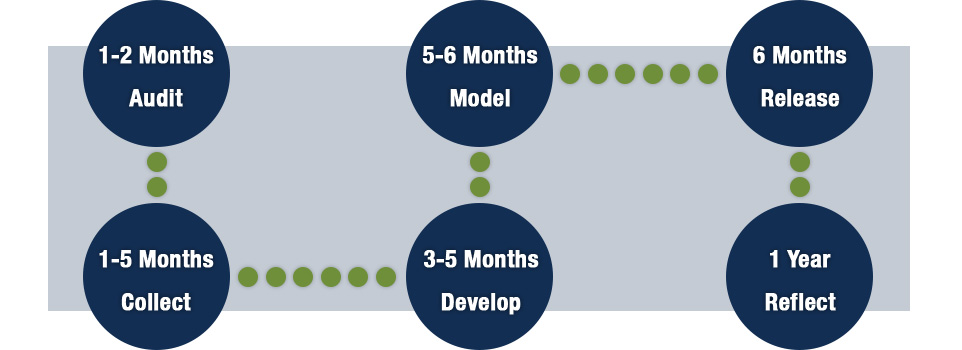1-2 Months: AuditAsked:
Conducted:
Identified:
Reviewed:
|
Many social media accounts were branded 'NIST' over the years but lacked naming conventions. The accounts were then abandoned after teachers had left.
Sometimes these accounts were compromised and inappropriate material was posted under the NIST International School brand. To address this issue, we conducted an audit of all social media accounts associated with NIST, and sent cease and desist requests to the owners of those accounts or requests to the parent brands (Twitter, Facebook). This helped clean up the digital footprint of the school. |
|
Begin by conducting searches on each social media site for your school's name and also through exact Google searches: "your school name" with quotations. If you're not sure how to contact a social media company, try conducting searches for "social media company + brand + contact/report". If the owner of the account doesn't disable it, or is unreachable or unknown click HERE to report the account.
|
1-5 Months: CollectCollected:
Encouraged:
Practiced:
|
In early 2014, our research showed that NIST International School had no formal policy or procedures regarding social media. The pervasiveness of this in many international schools became evident when reached out to our global network of educators. We found that many schools adhered to more general acceptable use policies (AUPs) for devices, but had nothing in place specifically for social media. Comparatively speaking, most of those AUPs unpack the ‘do’s and don’ts’ for use of the school hardware, gloss over ‘cyber-bullying’, and take a stab at cyber-safety.
At NIST International School, the 2014 AUP was a series of negatives and semantically constructed walls around the user. For example:
|
3-5 Months: Review and DevelopResearched:
Asked:
Reviewed:
Developed:
|
The implementation of Twitter and increased use of other social media coincided with an official review of the mission, vision and values at NIST. In our school this made it easier to relate the philosophy underpinning social media with our broader values. During this process, detractors voiced their opinions about the dangers of social media, and we were able to respond to those criticisms as a result of the implementation being integrated into a larger review.
|
|
Often a lack of knowledge about how students are actually using social media contributes to fears. Our data showed that schools do not informally or formally research the social media use of its students, yet in the US alone, statistics record that 93 percent of youths from 12 to 17 have independent access to social media (Lenhart 2010). It begs the question: what exactly do our learners do online? Schools have assumed how social media might or could have an impact upon the school environment, and have created a list of rules to hopefully negate these unknowns. Or worse, they have avoided the creation of a social media policy entirely.
|
5-6 Months: ModelShared:
Developed:
Modelled:
|
It can be very difficult to shift the culture of the school from having a small group of active teachers on social media to widespread use. At NIST we were able to encourage more teachers to use it by modeling its use at our PYP exhibition, and by creating year level accounts for teachers and creating initial content - including Tweets, connections, etc.
|
|
Create a model account, whether the official school account or a class/teacher account so teachers can see the value of it. Develop a library of sample tweets that can be sent to them to ease them into the Twitter mindset. If they are still struggling, tweet under their accounts to get them started.
|
6 Months: ReleaseEngaged:
Showcased:
|
Considerations: One of these is the friction increasingly evident in the divide created when the fear of technology and its perceived dangers clash with the desire to leverage and enjoy the potential provided by the constant innovation and efficiency that new technology provides. The potential use of innovative technology in education seems limitless. However, the aforementioned tensions between the rapid advance of technology and the ways that humans interact with it pose a conundrum for educational policy creators.
Sometimes stakeholders need to see it in action to believe it. Working with early adopters enables teachers to build data for the school of how to ‘do it right’. This is turn models behaviours to teachers who may be nervous, and evidences to parents that the school can keep kids healthy and safe. |
1 Year: Reflect
Think about how you are using each account,
- Are they active?
- Do they tell the story of the school?
- Do they engage students in the classroom?
- Do they connect learners across the globe?
- What changes can you make to the system you have implemented to release more control and autonomy to the learners in your care?
Take it to your school...
Here is a document to help scaffold this process in your own school.
Your browser does not support viewing this document. Click here to download the document.











